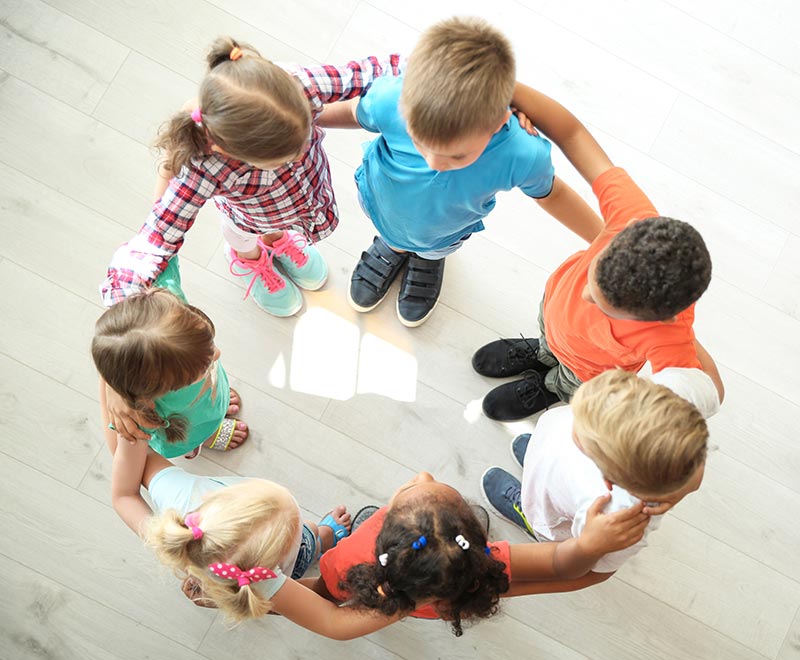This activity will help children learn to show care and concern toward their peers.
get started

Menu
- Home
- Teacher's Blog - Think Kindness
teacher's blog informative insights by leading educators
teacher's blog
informative insights by leading educators
informative insights by leading educators
- Home
- Teacher's Blog - Think Kindness
Menu
featured articles
How Do I Boost My Child's Self-Esteem? Tips for Teaching Children Self-Regulationprevious articles
Reclaiming Routine At Home Think Kindness Teaching Healthy Food Habits with Edible Gardens 4 Back to School Must Haves for Your Preschool Classroom Cooking Up Fun in the Mud Kitchen Best Gifts for Infants Toddlers and Preschoolers Finding the Interests of the Struggling Reader Connecting Children to Their Cultures and Communities 10 Tips for Beginning Child Care Providers Preparing the Classroom for Kids with Food Allergies The Paraprofessional in SPED Classrooms Make Color Spray Murals This Spring!
Think Kindness
By John Funk
In my opinion, one of the best compliments a person can ever receive is, "He/She always showed kindness to everyone."
As I visit classrooms around the country, I can always tell a kind teacher. The classroom is nurturing and the children are loving every minute of being in school. I have the luxury of visiting classrooms from preschool to sixth grade and it is the same, no matter the age of the children. Kindness builds a foundation for a wonderful classroom and a wonderful world.
Recently, however, there has been a wave of anger and unkindness infiltrating our country. Because of social media, people can trade insults and unkindness without repercussions. The results have been a lot of angry and unhappy people.

John Funk
 Children’s attitudes toward people, whether it is ethnicity or gender begin to form at a very early age, as do other personality traits. That is why it is extremely important for us to begin teaching and modeling kindness in early childhood years. We cannot control what experiences a child has outside of the classroom, but we can make sure that kindness is an important part of our social and emotional support for the children in our care. Here are a few simple ideas for making your classroom more kindness friendly:
Children’s attitudes toward people, whether it is ethnicity or gender begin to form at a very early age, as do other personality traits. That is why it is extremely important for us to begin teaching and modeling kindness in early childhood years. We cannot control what experiences a child has outside of the classroom, but we can make sure that kindness is an important part of our social and emotional support for the children in our care. Here are a few simple ideas for making your classroom more kindness friendly:- Make a Kindness Bulletin Board on the wall. Cut out smiley face shapes. Each time you observe a child doing something kind in the classroom, write her name on a face and have her post it on the bulletin board. Review the kindness faces earned at the end of the day.
- Begin each day by asking the children to identify kind things they can do that day for others in the classroom. At the end the day, have the children report on kind things they did or observed during the day.
- Model kindness daily in the classroom. Compliment children, compliment adults, and use smiles and kind words throughout the day.
- Think of kind acts that the children can do for others in the center or school, such as making cards or a kindness poster for another class or adults in the school.
It is up to us, early childhood educators, or help our young generation see kindness modeled on a regular basis and understand the joy that comes from being kind to others. For some children, our modeling may be the only kindness examples happening in their lives while they are in our care.
free kindness day creative activities
This activity helps promote a sense of belonging by discussing the members of the community.
get started
get started
This activity will help children learn ways to show kindness to the adults who care for them.
get started
get started
featured articles
One of the greatest gifts you can give a child is a positive self-esteem. Building this takes time and practice. Your help and encouragement can help your child be better prepared for life outside the home, whether that is at school, or in public.
read more
Your child's self-regulation is their ability to control their emotions and responses to outside influences or occurrences. This self-regulation is vitally important for them to be functioning members of society.
read more



